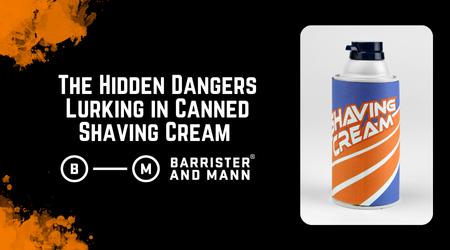Welcome to the first installment of Notes from the Lab! This will be an intermittent series of articles in which Will describes his ongoing work on the fabled Lavanille perfume Lavender, Interrupted. We hope you enjoy!
Lavender is tricky business.
I don't say this lightly. I love lavender. I prize it in shaving, as eau de cologne, in bath soap. It featured prominently in the hot compresses my mother used to put on my chest when I was sick. And, in general, lavender as we think of it is a fairly straight forward aroma. You wouldn't think that it's that hard to make lavender different, to make it special. But it's bloody difficult.
But what's wrong with lavender just as nature made it? Why do we need to add new materials to change it? Same reason that painters add a touch of white to their blues or a little red to their purples: lavender is raw material, a pigment on the olfactory canvas, but perfumers almost always tune it to their needs and to the task at hand. It's part of the process.
Back to the flower: the very first thing I had to figure out is what kind of lavender I want for Lavender, Interrupted. I don't mean the variety (known in botany as a "cultivar"), though that's important too. But I had to lay out what shape I want the lavender to take. Should it be sharp or soft? Minty or spicy? Blue, purple, green? What does the fragrance that I want this to be require?
I've decided that the lavender here should be somewhat sharp and minty, so as to counterbalance the richness that I intend to create in the rest of the perfume. This involves two factors in particular: a) Finding a raw material as close as possible to what I want the finished product to smell like, and; b) Determining what compounds occur naturally in lavender oil that make it smell one way or another, then manipulating those compounds until I have what I want. As I alluded to above, it's quite a lot like mixing paint.
I evaluated no fewer than 25 different lavender cultivars and varieties to find what I want and eventually chose a gorgeously crisp high-alpine lavender from France for the purpose. High-alpine lavenders (more commonly and modernly called "high altitude" lavenders) are generally more fleeting and less heavy or rich than their more terrestrial cousins, but the crystal clear, silvery character of this
particular lavender was just too perfect for me to pass it over. I had initially leaned more toward a soft lavender, but French Alpine stole my heart. This is the one.
To give you an example of what a full lavender accord looks like, here's a pretty simple one that appears in a classic perfume formulary:
Eau de Lavande Extra, from Le Livre du Parfumeur by Felix Cola, 1927
| Lavender Oil |
600 g |
| Bergamot Oil |
100 g |
| Lemon Oil |
50 g |
| Bulgarian Rose Otto |
10 g |
| Geranium Bourbon |
40 g |
| Coumarin |
50 g |
| Isoeugenol |
10 g |
| Musk Ambrette |
40 g |
| Benzoin Resinoid (Sumatra) |
100 g |
More complicated than you would have expected, right? This one in particular is strikingly natural-heavy, which is actually fairly unusual, but there are three synthetic aromachemicals included for good measure. I've made this one in the lab and, while quite pretty, it's too soft and floral for what I'm looking for. But this is an honest-to-goodness Golden Age lavender accord in full relief, even if it's more simple than many of its brethren, and indeed more simple than the one I'm working on now. It's important to have a picture of what a lavender accord can look like.
Once I had selected the raw material, I began to construct the accord out from there. As many people have pointedly noted over the years, I did not study perfumery in any kind of organized or academic setting, so most of what I know was learned by reading through my personal library of perfumery treatises and a whole lot of experimentation. Never having built an accord like this before, I decided to hit the books to see what I could find.
Most of the accords I unearthed are quite soft and floral, which keeps very much to the old-school style of French perfumery that I tend to favor as a rule. However, as I said, that's not the sort of lavender that I want for
Lavender, Interrupted, so I turned to the internet. Side note: if you've never gone digging through the
Basenotes DIY forum, I
highly recommend it as an extraordinarily illuminating experience. Upon searching through nearly 25 years of material, I learned that the compound that gives lavender a minty character is β-phellandrene. I also learned that its α-phellandrene cousin, which smells strongly of eucalyptus, has a tendency to form explosive peroxides at elevated temperature, so I'm quite pleased that I won't need it.
As we move forward in this series, I'll discuss the development of each accord in turn to give you an idea of what's involved in the creation of a perfume. This entry is probably already a touch longer than it ought to be, so I'll leave it here for this week, but stay tuned next week for the rest of the development as I discuss my attempts to (hopefully) finish the accord!



Comments
I’m very much looking forward to the continuation of this blog and the release of Lavender, Interrupted.
Fantastic start Will!
This is a wonderful explanation of your process, Will. I really can’t wait for this release. I have a feeling it could be my one of your best.
I love lavender, looking forward to this and giving it a shot!